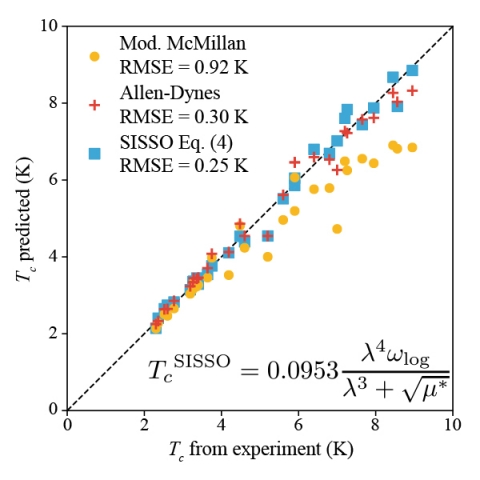Functional Form of the Superconducting Critical Temperature from Machine Learning
S. R. Xie, G. R. Stewart, J. J. Hamlin, P. J. Hirschfeld, and R. G. Hennig
Predicting the critical temperature Tc of superconductors is a notoriously difficult task. Here we show that machine learning can deduce a practical equation for Tc and identify the relevant physical parameters. We demonstrate that incorporating physical knowledge into equation-based machine learning has the potential to learn physical relations on relatively small data sets and expect this new paradigm to generate a significant number of follow-on efforts not just to superconductivity, but to a variety of other materials design problems.This machine-learning approach provides the opportunity to identify relevant measures of electronic structure crucial for superconductivity that can enable a high-throughput search for novel superconductors with higher critical temperature and fields for application in accelerator cavities.

